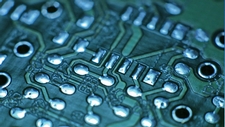Build a Circuit
Readiness

TEKS Objective
Demonstrate that the flow of electricity in circuits requires a complete path through which an electric current can pass and can produce light, heat, and sound.
Essential Understanding
The student knows that energy occurs in many forms and can be observed in cycles, patterns, and systems.
Science Background
Circuits: Energy Quest (website) - Learn the basics about electric circuits, which can be through of as unbroken paths along which an electric current exists or is able to flow.
Circuits
Energy Quest, California Energy Commission, www.energyquest.ca.gov
Electric Circuits: All About Circuits (website) - Series of explanations and illustrations present the basic concepts of electricity. This page also includes links to information about many other topics related to electricity
Electric Circuits
All About Circuits, www.allaboutcircuits.com
How Does Current Flow in an Electric Circuit? Innovate Us (website) - Brief explanation of different kinds of electrical circuits and how they work.
How Does Current Flow in an Electric Circuit?
Innovate Us, www.innovateus.net
.
Signature Lesson
How Electric Current Produces Energy: Ohio Department of Education (PDF) - Students create electrical circuits and demonstrate how the electric current in a circuit can produce light, sound and thermal energy.
How Electric Current Produces Energy
Ohio Department of Education,ims.ode.state.oh.us
- Supporting Lessons
- Extensions
- Assessment Ideas
- Literature Connections
- Related
TEKS - Additional Resources
Supporting Lessons
Scouting for Circuits: Charles A. Dana Center (PDF) - Students construct a circuit and a conductivity tester to determine if various materials conduct electric current. (Producing Light lesson)
Scouting for Circuits
Charles A. Dana Center, www.utdanacenter.org
Heating Up! Utah Education Network (website) - Students explore and learn how heat can be produced from electricity. (Producing heat lesson).
Heating Up!
Utah Education Network, www.uen.org
Steadiness Tester: PBS Kids Go! (website) - Students create a circuit that buzzes when the circuit is completed. Steadiness Tester is a game that utilizes this buzzer to test one’s hand steadiness while moving an aluminum foil-covered loop along the contours of a coat hanger.(Producing Sound lesson)
Elaboration Lessons and Extensions
Light Your Way: TeachEngineering (website) - Students explore one use of electricity while designing and constructing a working portable flashlight.
Light Your Way
TeachEngineering, www.teachengineering.org
Flashlight: PBS Kids (website) - Instructions for building a simple homemade flashlight.
Flashlight
PBS Kids, www.pbskids.org
Assessment Ideas
Solve questions 8 and 9 on page six of the “Scouting for Circuits” activity in the Supporting Lessons. Click the link to access the lesson.
Literature Connections
Simply Science: Electricity. Felicia, L. (ISBN-13: 978-1433900310)
Making a Circuit. Oxlade, Chris (ISBN-13: 978-1432956790)
Cool Circuits. Martineau, Susan (ISBN-13: 978-1615334049)
Dear Mr. Henshaw. Cleary, Beverly (ISBN-13: 978-0688024055)
Discovering Electricity. Bains, Rae (ISBN-13: 978-0893755652)
The Story of Electricity. Bailey, Jacqui (ISBN-13: 978-1404811294)
Additional Resources
Energy Story: Energy Quest (website) - Energy education website that teaches “energy ethic” for conserving finite resources to insure our energy future.
Energy Story
Energy Quest, California Energy Commission, www.energyquest.ca.gov
The Blobz Guide to Electric Circuits: Andy Thelwell (website) - This interactive website teaches students about circuits and conductors.
The Blobz Guide to Electric Circuits
by Andy Thelwell, www.andythelwell.com/blobz
Physics in the Sink: Dancing Water: American Physical Society (website) - Brief exploration of static electricity that can serve as a demo lesson and/or introduction to electricity. Students use a comb charged with static electricity to divert a stream of water.
Physics in the Sink
by the American Physical Society, www.physicscentral.com
Science Center: Energizer (website) - Learn about circuits, the principles of electricity, flashlights and batteries at this commercial website, home of the famous “bunny.”
Science Center
Energizer, www.energizer.com
TEKS Navigation
Grade 5
Need Assistance?
If you need help or have a question please use the links below to help resolve your problem.

Comments